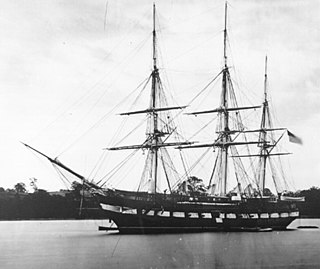Four ships of the Royal Navy have been named HMS Diomede. A fifth was planned but never completed:

The Royal Navy (RN) is the United Kingdom's naval warfare force. Although warships were used by the English kings from the early medieval period, the first major maritime engagements were fought in the Hundred Years War against the Kingdom of France. The modern Royal Navy traces its origins to the early 16th century; the oldest of the UK's armed services, it is known as the Senior Service.
- HMS Diomede (1781) was a 44-gun fourth-rate two-decker launched in 1781 and wrecked in 1795.
- HMS Diomede (1798) was a 50-gun fourth rate built as HMS Firm but renamed in 1794 and launched in 1798. She was sold in 1815.
- HMS Diomede was to have been a wooden screw sloop, projected in 1866 but cancelled in 1867.
- HMS Diomede (D92) was a Danae-class light cruiser launched in 1919 and sold in 1946.
- HMS Diomede (F16) was a Leander-class frigate launched in 1969. She was sold to Pakistan and handed over in 1988, as Shamsher. She served until 2003.

HMS Diomede was a 44-gun fifth rate built by James Martin Hillhouse and launched at Bristol on 18 October 1781. She belonged to the Roebuck class of vessels specially built during the American Revolutionary War for service in the shallow American coastal waters. As a two-decker, she had two complete batteries of guns, one on the upper deck and the other on the lower deck.
In the rating system of the British Royal Navy used to categorise sailing warships, a fourth-rate was a ship of the line with 46 to 60 guns mounted.

In the 18th century and most of the 19th, a sloop-of-war in the Royal Navy was a warship with a single gun deck that carried up to eighteen guns. The rating system covered all vessels with 20 guns and above; thus, the term sloop-of-war encompassed all the unrated combat vessels, including the very small gun-brigs and cutters. In technical terms, even the more specialised bomb vessels and fireships were classed as sloops-of-war, and in practice these were employed in the sloop role when not carrying out their specialized functions.